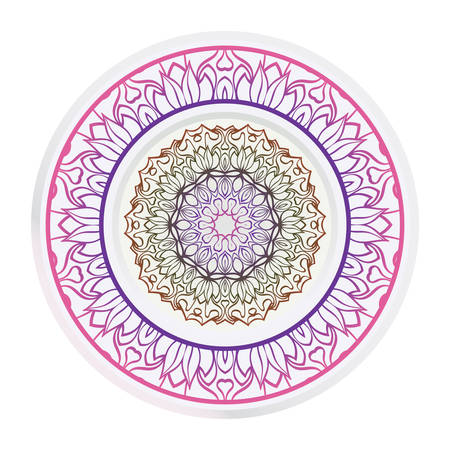1. Understanding the Sleep Struggle: Insomnia and Nighttime Anxiety in the US
If you’ve ever found yourself staring at the ceiling in the middle of the night, mind racing and sleep nowhere in sight, you’re definitely not alone. In today’s fast-paced American society, sleep issues like insomnia and nighttime anxiety have become more common than ever. Life doesn’t really slow down—whether it’s work stress, family responsibilities, or just trying to keep up with daily news and social media, our minds are often on overdrive when we should be winding down for rest.
How Common Are Sleep Issues in America?
Recent studies show that millions of Americans struggle to get a good night’s sleep. According to the Centers for Disease Control and Prevention (CDC), about one in three adults in the US don’t get enough sleep on a regular basis. Insomnia—difficulty falling or staying asleep—affects an estimated 30% of American adults at some point during their lives. Even more people experience nighttime anxiety, where worries and stress bubble up just as they try to relax.
Impact of Insomnia and Nighttime Anxiety
| Issue | What Happens | Everyday Impact |
|---|---|---|
| Insomnia | Trouble falling or staying asleep; waking up too early | Fatigue, irritability, trouble focusing at work or home |
| Nighttime Anxiety | Worries increase at bedtime; racing thoughts keep you awake | Restless nights, increased stress, feeling overwhelmed by morning |
Why Is This So Relevant Today?
The hustle culture in America often rewards being busy and productive—sometimes at the expense of our own health. Technology keeps us connected 24/7, making it tough to truly unplug before bed. Plus, economic pressures and global uncertainties add extra layers of worry that show up at night. It’s no wonder so many people find themselves restless when all they want is a peaceful night’s sleep. Learning practical tools like mindful breathing can be a game-changer for those facing these modern-day challenges.
2. The Science Behind Breathwork and Sleep
How Mindful Breathing Impacts Your Body at Night
If you’ve ever found yourself lying awake at 2 a.m., mind racing, you know how tough it is to “just relax.” This is where mindful breathwork steps in. It isn’t just a feel-good wellness trend—there’s real science showing how intentional breathing calms your body and preps you for restful sleep.
The Nervous System: Hitting the Brakes on Stress
Your body runs on two main nervous system settings: “fight or flight” (sympathetic) and “rest and digest” (parasympathetic). When stress or anxiety keeps you up, your sympathetic system is in overdrive—heart pounding, thoughts racing. Mindful breathing helps flip the switch back to parasympathetic mode, telling your brain it’s safe to slow down.
How Breathwork Shifts Your Nervous System
| System State | What Happens | Breathwork’s Role |
|---|---|---|
| Sympathetic (“Fight or Flight”) | Increased heart rate, rapid breathing, tense muscles, alert mind | Breathwork slows breathing, signals safety, begins calming process |
| Parasympathetic (“Rest and Digest”) | Slower heart rate, relaxed muscles, calm mind, easier to fall asleep | Mindful breathing deepens this state, helping with both falling and staying asleep |
Cortisol: Lowering the Body’s Stress Hormone
Cortisol is your body’s main stress hormone. It’s great when you need to run from danger—not so helpful at bedtime. Studies show that slow, deep breathing can actually reduce cortisol levels in your bloodstream. That means less tossing and turning from stress-driven energy surges right when you’re trying to wind down.
The Sleep Connection: Setting Up for Success
When you use mindful breathwork before bed, you’re not just relaxing—you’re changing your body chemistry and nervous system setting. This creates the ideal environment for natural sleepiness to take over. Instead of fighting your own biology, you’re working with it.

3. Getting Started with Breathwork: Simple Techniques for Beginners
If you’re new to breathwork, don’t worry—you don’t need any special equipment or a ton of free time to get started. These simple breathing techniques are easy to learn and fit right into your American lifestyle, whether you’re winding down after a long day at work or trying to quiet your mind before bed. Let’s take a closer look at two popular methods: box breathing and 4-7-8 breathing.
Box Breathing
Box breathing is a favorite among athletes, first responders, and anyone looking for a quick way to calm the mind and body. The technique is called “box” because you breathe in four equal parts, like the sides of a box. Here’s how you do it:
| Step | Action |
|---|---|
| 1 | Breathe in through your nose for 4 seconds |
| 2 | Hold your breath for 4 seconds |
| 3 | Exhale through your mouth for 4 seconds |
| 4 | Hold again for 4 seconds |
You can repeat this cycle three to five times when settling into bed, or anytime nighttime anxiety kicks in. It helps shift your focus away from racing thoughts and signals your body that it’s safe to relax.
4-7-8 Breathing
The 4-7-8 method is another accessible tool that many Americans use to ease into sleep. This technique was popularized by Dr. Andrew Weil and is designed to slow your heart rate and soothe an anxious mind. Here’s how it works:
| Step | Action |
|---|---|
| 1 | Breathe in quietly through your nose for 4 seconds |
| 2 | Hold your breath for 7 seconds |
| 3 | Exhale slowly through your mouth for 8 seconds (make a whooshing sound if you like) |
This pattern encourages deep relaxation by extending the exhale, which activates the body’s natural relaxation response. Start with four cycles each night and gradually increase as you get more comfortable.
Tips for Integrating Breathwork into Your Nightly Routine
- Create a calming environment: Dim the lights, put away screens, and consider adding soothing sounds or scents.
- Consistency matters: Try to practice at the same time each night so your body learns that these techniques mean it’s time for rest.
- No perfection needed: If your mind wanders or you lose track of counting, just gently bring your attention back to your breath.
- Add to what works: You can combine breathwork with other bedtime rituals—like journaling or gentle stretching—to build a routine that feels just right for you.
The beauty of these techniques is their simplicity and flexibility. Whether you’re struggling with insomnia, nighttime anxiety, or just want to wind down after a stressful day, breathwork offers a practical way to bring calm back into your evenings—no fancy equipment required.
4. Personal Stories: Real-Life Transformations Through Breathwork
How Mindful Breathing Changed Sleepless Nights for Everyday Americans
If you’ve ever stared at the ceiling at 2 a.m., battling racing thoughts or a pounding heart, you’re not alone. Many people across the US have found hope and better sleep by adding mindful breathing into their nighttime routines. Here are some real stories that might sound a lot like your own struggles—and show what’s possible with breathwork.
Sarah’s Story: From Restless to Rested
Sarah, a teacher from Ohio in her late 40s, used to dread bedtime. She’d toss and turn, anxious about work and family. After reading about breathwork on a wellness blog, she tried a simple “4-7-8” breathing method before bed. Within two weeks, she noticed her mind settled faster, and she fell asleep more easily. Now, mindful breathing is as much a part of her routine as brushing her teeth.
Mike’s Experience: Calming Nighttime Anxiety
Mike, a software engineer from Austin, struggled with anxiety that flared up every night. He started practicing box breathing—inhale for four counts, hold for four, exhale for four, hold for four—right when he got into bed. He says it’s helped him quiet his mind and even cut down on how often he wakes up during the night.
Lisa’s Journey: Better Sleep During Menopause
For Lisa, a mom of three from California going through menopause, insomnia was a constant battle. She learned about body scan breathing in an online support group and began using it whenever she felt hot flashes or restlessness at night. She credits this practice with helping her ride out rough nights without turning to medication.
Breathwork Techniques That Worked for Them
| Name | Technique Used | Main Benefit Noticed |
|---|---|---|
| Sarah | 4-7-8 Breathing | Fell asleep faster, less worry before bed |
| Mike | Box Breathing | Less nighttime anxiety, fewer wake-ups |
| Lisa | Body Scan Breathing | Eased restlessness and hot flashes |
Your Turn: Making It Work for You
The best part about these stories? These are just regular people who found something that clicked. If you’re struggling with insomnia or nighttime anxiety, try adding mindful breathing to your own evening routine—you might be surprised by what happens next.
5. Building Your Own Sleep Ritual: Integrating Breathwork into Everyday American Life
If you’ve ever found yourself staring at the ceiling night after night, you’re not alone. Insomnia and nighttime anxiety are real struggles for many Americans—from busy parents juggling family schedules to midlife professionals dealing with job stress and changing bodies. The good news? Mindful breathwork can become a practical, sustainable tool in your sleep toolkit. Let’s explore how to create a nightly ritual that fits your lifestyle, no matter how packed your day is.
Why Rituals Matter for Better Sleep
Our brains crave routine. When we do the same thing each night before bed, it signals our mind and body that it’s time to wind down. Combining breathwork with other calming activities can make falling asleep easier and reduce anxious thoughts that keep us awake.
Finding the Right Fit: Adapting Breathwork for Different Lifestyles
No two American households look alike. Here’s how you can tailor a breathwork-based sleep ritual to suit your unique routine:
| Lifestyle | Breathwork Ritual Ideas |
|---|---|
| Busy Parents | – After tucking kids in, spend 5 minutes practicing box breathing (inhale 4 counts, hold 4 counts, exhale 4 counts, hold 4 counts). – Pair breathwork with a short gratitude reflection to shift focus from daily chaos to calm. |
| Midlife Professionals | – Schedule a “no-screen” time 30 minutes before bed. – Practice diaphragmatic breathing while listening to soft music or nature sounds. – Add gentle stretches to release tension from sitting all day. |
| Shift Workers | – Create a consistent pre-sleep routine regardless of the hour. – Use 4-7-8 breathing (inhale for 4, hold for 7, exhale for 8) to signal the body it’s time for rest. – Wear an eye mask and play white noise if sleeping during daylight hours. |
| Seniors or Empty Nesters | – Enjoy slow nasal breathing while reading a physical book. – End the evening with a warm cup of herbal tea and mindful breathing. – Keep the bedroom cool, dark, and tech-free. |
Tips for Making Your Ritual Stick
- Start Small: Even two minutes of focused breathing can make a difference. Build up as it becomes habit.
- Pair It With an Existing Habit: Link breathwork to something you already do—like brushing your teeth or setting your alarm.
- Be Flexible: If you miss a night, don’t sweat it. Just pick it back up tomorrow.
- Create a Calming Environment: Dim the lights, use lavender spray, or play relaxing sounds as cues for your brain.
Your Real-Life Sleep Toolkit
The beauty of breathwork is its portability—you can do it anywhere, anytime. Whether you have five quiet minutes after everyone’s asleep or just enough time between meetings to pause and breathe, these small rituals add up over time. Experiment with what feels most natural for you and remember: consistency is key. By integrating mindful breathing into your nightly routine, you give yourself permission to unwind, reset, and welcome restful sleep—no matter what life throws your way.
6. Moving Forward: Resources and Next Steps for Better Sleep
If you’re ready to keep building your breathwork and sleep practice, there are plenty of resources out there to help. Whether you want daily reminders, guided sessions, or a sense of community, these options can make your journey smoother and more enjoyable. Here’s how you can keep moving forward:
Apps for Breathwork and Sleep Support
| App Name | Main Features | Best For |
|---|---|---|
| Calm | Guided breathwork, sleep stories, meditation tracks | All-around sleep and relaxation support |
| Insight Timer | Free guided meditations, sleep music, breathwork exercises | Wide variety of teachers and styles |
| Breethe | Personalized sleep plans, breathwork routines, anxiety relief tools | Customizing your sleep routine with breathing exercises |
| Headspace | Meditation basics, sleepcasts, mindful breathing sessions | Building habits with easy-to-follow guidance |
| MyLife Meditation (formerly Stop, Breathe & Think) | Mood check-ins, personalized recommendations, short breathing practices | Checking in with your emotions before bed |
Workshops and In-Person Classes
If you learn best face-to-face or want to meet others who share your goals, try looking for local workshops or classes. Yoga studios often offer special sessions focused on breathwork for sleep and stress relief. Community centers sometimes host free or low-cost mindfulness groups that welcome beginners.
How to Find Local Resources:
- Search for “breathwork workshops near me” or “sleep wellness classes” on Google Maps or Eventbrite.
- Check out bulletin boards at yoga studios, libraries, or health food stores.
- Ask about group classes at nearby wellness clinics or holistic health centers.
Online Communities for Ongoing Support
You don’t have to do this alone. Online communities can offer encouragement and accountability as you keep up with your new habits. Try joining:
- Reddit groups: r/Meditation, r/insomnia, r/breathwork — These forums are active with tips and shared experiences.
- Facebook Groups: Search for “Breathwork for Sleep” or “Mindfulness for Insomnia.” Many groups host live events and Q&A sessions.
- Mighty Networks & Meetup: Look for virtual meetups around mindfulness and healthy sleep routines.
Your Next Steps—Start Small and Stay Curious!
No matter where you begin—an app on your phone, a class in your neighborhood, or an online group—just taking the next step is progress. Try different resources until you find what feels right for you. With patience and a little curiosity, you’ll discover that mindful breathing isn’t just a tool for better sleep—it’s a skill that can support your whole well-being journey.


